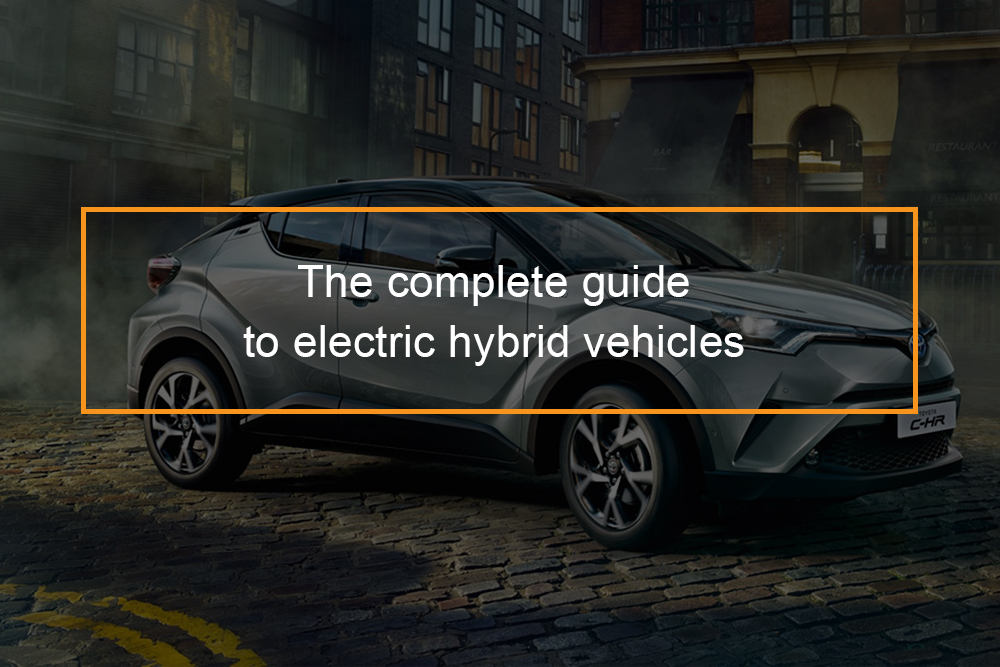
Buying a car is a major decision, particularly if you are thinking of getting a hybrid. These cars are more fuel efficient and have helped reduce the emission of greenhouse gases. With so many types of hybrid cars available in the market, it is vital to know exactly what you want so you can choose a vehicle that meets your needs.
Key things to assess before getting a hybrid
Crucial tips to help you select the right hybrid for your needs
Car buyers have a lot of options when it comes to getting a car from its size, color, style, features and now they can choose how they want to fuel their vehicles .you can opt to get a traditional gas or diesel powered one or a hybrid car. Hybrids or fully electric automobiles have a lot of benefits, but before deciding to get one, here are some things you should consider.
The type of hybrid
It is crucial that you educate yourself well on what a hybrid is?, The types available, the type of powertrain it uses, the range of cars they come in, and how much fuel they save.
The safety and reliability ratings of the car
Research on how safe and reliable the car you want to get. Look for its safety rating on safety sites.
The price of the hybrid
Your budgetary funds will dictate how much you are willing to spend to buy the car. This includes any financial aid you had to take to get the car, taxes, registration fees, the cost of the car, the cost of repairs and maintenance. Weigh these costs to see if getting a hybrid is a viable option.
Incentives
To encourage the use of hybrids, some areas have offered tax reductions to offset the high purchasing cost, free parking, they are allowed to use designated lanes, and some insurance companies offer more savings for hybrid owners.
The cargo space available in the car
The battery and its cooling systems often reduce the cargo space available in smaller hybrids.
The availability of public charging networks
Drivers of these cars should be able to find public charging stations when needed. They can buy charging systems to use at home, but they have to join a charging network.
Is it new or used?
When deciding whether to get a new or used hybrid the most important thing to consider is whether it is obsolete technology-wise. Hybrid car technology is evolving faster with new cars having better batteries for better fuel economy, significant gains in the range of a fully electric vehicle, and the latest safety systems, etc. It makes selling a used hybrid harder, but this can be affected by supply and demand, fuel prices, regional preferences, and the incentives offered.
The major drawback of getting a new car is the depreciation rate. Even though it is low on average when fuel prices are high, in about five years it accounts for almost half of the car’s value.
When getting a used hybrid focus on reliability.
The electric charger
Find out if the car will need a charger. If so, most hybrids have an external wall charger known as an EVSE (for electric vehicle supply equipment). A level 1 EVSE can charge a car from a 120-volt outlet, a level 2 EVSE charges faster. How long the car charges will depend on the onboard inverter and EVSE.
Why are you getting the hybrid?
Knowing the reason why you want to get a hybrid is crucial because it makes the decision easier.
-
-
Do you want to save on fuel?
While they are fuel efficient, these cars cost a lot more than the gasoline or diesel powered models and the savings made on fuel can be hard to calculate.
-
Do you want to be more environmentally conscious?
Hybrids do not emit as much greenhouse gases as the other car models. For example, a gasoline-powered Honda Civic emits 6.3 tons of greenhouse gases yearly while the hybrid version emits 4.4 tons. This is a considerable difference.
-
Are you looking for a car with cutting-edge technology?
Hybrids are high tech cars because of the integration of the electrical systems in the vehicle.
-
Maybe you like the design of the car
Whatever your motivation is it will point you in the right direction.
-
Look at other alternatives
Consider other ways you can achieve your car goals. If it is fuel efficiency hybrids are not the only fuel-efficient, tech-savvy cars in the market. Some gasoline cars are just as efficient as hybrids. Clean diesel cars are among the top ten fuel efficient cars. Entirely electric cars do away with the gas or diesel engine completely. You can save fuel by simply changing your driving habits and thus shrinking your carbon footprint.
If you want to reduce emissions; try public transport, carpooling or bicycling.
Get the car that matches your driving style
-
Do you drive long or short distances
Standard cars have better mileage on the highway than in stop-and-go situations common in city driving. Hybrids fare much better here and can give you the most significant savings because at low speeds they use the electric motor shutting down the gas engine when stopped. Gas cars keep idling thus wasting fuel.
At high speeds, hybrids rely on the gas engine, and as such, a driver who has a long commute to work on an open road will not benefit a lot from the hybrid unlike one who takes short trips around town.
-
Do you plan on using cargo haulers
Just like standard cars, hybrids need more power when you want to use them for hauling cargo or towing. Check the engine size to see if it will suit your cargo needs. Many SUVs come with larger engines like V6 or V8.
Accelerating rapidly at high speeds can reduce the hybrid’s fuel savings. Many have dashboard monitors that let you keep an eye of the millage. They also offer economic driving modes that trade acceleration for savings on fuel.
Make a list
Write down all the hybrid cars that meet your criteria and visit the manufacturer’s or dealer websites, visit other sites where they sell new or used hybrids, or you can check the local classifieds.
What is an Electric Hybrid Car?
Hybrid car basics
A hybrid car is a vehicle that is powered by a combustion engine, an electric motor and battery too. By making use of the motor and engine, it can achieve better fuel efficiency, emit fewer greenhouse gases and pollutants as well as help the driver save on fuel costs.
Most hybrids have large batteries that can be recharged from an outlet thus allowing them to travel longer before switching to the gasoline or diesel engine.
Hybrid vehicle features
These features help improve the fuel efficiency of the car.
- The battery powers the motor, increasing the fuel efficiency.
- It also has an “idle-off” feature that turns off the combustion engine when the stops. The battery provides power to the air conditioner, and other accessories while the car idles in traffic or stop lights. The electric motor gets the car moving again, and if needed the combustion engine will be engaged for additional power.
- The “regenerative braking” feature captures some of the kinetic energy that is dissipated during braking and turns it into electricity which is kept in the batteries. This can be used later to start or accelerate the car. Conventional cars use friction to dispel the kinetic energy as heat.
- “Power-assist” is another feature that reduces the load on the combustion engine, which means it can be downsized and be operated more efficiently. It produces less power but when combined with the electric motor, the power can easily equal or surpass that of the standard car.
- “Torque fill” t is another feature present in these cars where the electric motor generates torque to fill in the gaps during gear shifts. A torque-fill controller varies the torque of the motor on the axle not involved in the gear shift.
- Electric-only drive hybrids are the most efficient hybrids as the car is powered entirely by electricity and uses very little if any fuel. The electric-only drive is used only during startup, or when driving at low speeds. This allows the combustion engine to be used at a higher speed where it is most efficient.
The difference between a hybrid and other electric vehicles
The difference between these cars is how they are powered.
Hybrids:use a combustion engine and an electric motor that can be charged externally or internally.
Battery electric cars: use an electric motor and battery with no combustion engine. Because they do not use a combustion engine, they are cleaner and pollute the environment less.
Hydrogen fuel cell cars: the electric motor and battery are powered by converting hydrogen gas into electricity via a fuel cell. They are relatively new to the market.
Plug-in hybrids are considered as electric vehicles.
Types of hybrid vehicles
Understanding the kinds of hybrids available
Parallel hybrids
In these cars, both the engine and motor can drive the wheels. The ICE and electric motor are both attached to the transmission allowing them to power the car at the same time. Fuel is supplied to the engine while the generator charges the batteries.
It is suited for long distances and is more fuel efficient compared to the series hybrid car. It, however, in trying to maximize the efficiency it reduces the power output.
Series hybrids
The engine drives a generator that charges the battery used to power the electric motor. When the driver starts the car, the power is transmitted from the battery to the motor to move the wheels. When used on long distance trips the ICE provides the power. They have large batteries that offer more power at higher speeds. They are less fuel efficient when used to travel longer distances and are more expensive than parallel hybrids. The larger batteries make the car heavier.
Full hybrid
They have an electric motor that is powerful enough to start the vehicle from a complete stop and take it to full speed. The car can run on just the gas engine, the batteries or both. They have split power paths that allow for more flexibility in the drivetrain by interconverting mechanical and electrical energy.
Mild hybrid
These systems are the most straightforward and budget-friendly way to add electric drive train parts to an internal combustion car. The motor in these cars is small and acts as more of a booster. The ICE(internal combustion engine) will shut down completely when under no-load conditions like cruising down a hill or stopping. It allows for almost instantaneous restating of the combustion system and can still power some of the auxiliary systems like the AC or the stereo.
Some also have regenerative braking, power-assist or torque-fill, but they cannot solely power the car electronically.
They can power a lot of the car’s electrical systems, and the start-stop system saves fuel when the vehicle is idling. Turbo lag is reduced by torque filling until the engine comes to boost. Its hybrid system is smaller in size than in other hybrids thus reducing its overall weight and the system is not as complex as in the other hybrids. They, however, lack a full electric mode.
Plug-in hybrid
They are the closest to fully electric cars, being able to go longer distances on electric power alone. They are called plug-in because they can be charged at a charging station instead of relying on the engine and regenerative braking to power the battery. This eliminates range anxiety. Their battery packs are larger giving them extended electronic-only driving mode range.
They have increased range over the battery electric cars due to the range-extending gasoline engine and are cheaper than series hybrids and battery electric vehicles.
The larger battery packs add to the overall weight of the car. Because they are mainly electric, they have sophisticated systems that monitor and manage the car.
What are the benefits and drawbacks of hybrid cars?
Benefits of hybrid cars
- Cleaner energy because they use electricity and petroleum fuel, they emit fewer pollutants than standard cars.
- Regenerative braking captures the energy produced while braking and transfers it to the battery. This increases the charge available to the motor reducing the fuel consumption. It also extends the brakes lifespan.
- The hybrid allows for less national fuel dependence with its excellent fuel efficiency. It can also help keep the price of fuel in check.
- There are incentives offered to encourage drivers to adopt this technology.
- Most hybrids are lightweight compared to their standard counterparts.
- They have smaller, lighter, more efficient engines as they do not power the car alone.
- They are in high demand, so the resale value is still high.
- It is quieter than the standard combustion engine car.
Drawbacks of hybrid cars
- Most hybrids are made for fuel economy not speed. They lag behind their counterparts in total output and acceleration. They lack sport-tuned suspensions and other performance enhancements and the battery pack placement can affect the weight distribution and handling in general.
- They are expensive.
- Not all hybrids are equal, there are a variety available, and each has its pros and cons.
- The choices for cars are limited.
- They are quiet and can pose a danger as pedestrians cannot hear the car coming.
- They are also costly to maintain as the repair parts are not readily available, and not all mechanics have the know how to fix them.
How do hybrid cars work?
Most hybrids use a system made up of an electric motor and a combustion engine. The engines are typically smaller than in standard cars as the electric motor picks up most of the slack. The motor can take over for the engine at certain times.
The two motors work with other factors to increase the car’s fuel efficiency, lower its emissions and overcome the individual shortcomings of either system.
Here are the parts common in these systems:
- Gas engine: it is just a normal engine except it is smaller. Most have three-cylinder engines and are outfitted with advanced technology to run them more efficiently. The fuel tank size is the same.
- Electric Motor: they provide the energy needed to move the car while generating and storing electricity through technology like regenerative braking.
- Generator: it produces electrical power.
- Batteries: they store the electrical energy the vehicle produced and provides it when needed.
- Transmission: it transfers power to the wheels. There are two main transmission types in hybrids:
-
Parallel transmission
– it allows both the gas and electric engine to turn the transmission.a computer manages the two elements letting them work as efficiently as possible. The electric motor does nearly all of the work at low speeds while the gas engine takes over at higher speeds.
-
Series transmission
– in this transmission only the electric motor is joined to the transmission. The gas engine is connected to the generator and is used to generate electrical energy. The computer determines what percentage of power comes from the battery pack and generator.
Hybrid car maintenance
As with any car, hybrids need servicing, but special maintenance is not necessary unless it breaks down. This means that the cost of service is the same as that of an ordinary car. It can be lower as hybrids do not use the gas engine as much thus less wear. Regenerative braking preserves the brake pads by lowering the heat making the pads last longer.
Hybrids have warranties that are good for eight years or 100,000 miles(160,934 km) or ten years/150,000 miles(241,402 km). If you have an issue with the hybrid system after that, the repair cost can be quite high. Battery packs have however become cheaper.









